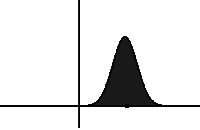
Photo from wikipedia
We present a model-based output-only method for identifying from time series the parameters governing the dynamics of stochastically forced oscillators. In this context, suitable models of the oscillator’s damping and… Click to show full abstract
We present a model-based output-only method for identifying from time series the parameters governing the dynamics of stochastically forced oscillators. In this context, suitable models of the oscillator’s damping and stiffness properties are postulated, guided by physical understanding of the oscillatory phenomena. The temporal dynamics and the probability density function of the oscillation amplitude are described by a Langevin equation and its associated Fokker–Planck equation, respectively. One method consists in fitting the postulated analytical drift and diffusion coefficients with their estimated values, obtained from data processing by taking the short-time limit of the first two transition moments. However, this limit estimation loses robustness in some situations—for instance when the data are band-pass filtered to isolate the spectral contents of the oscillatory phenomena of interest. In this paper, we use a robust alternative where the adjoint Fokker–Planck equation is solved to compute Kramers–Moyal coefficients exactly, and an iterative optimization yields the parameters that best fit the observed statistics simultaneously in a wide range of amplitudes and time scales. The method is illustrated with a stochastic Van der Pol oscillator serving as a prototypical model of thermoacoustic instabilities in practical combustors, where system identification is highly relevant to control.
Journal Title: Proceedings of the Royal Society A: Mathematical, Physical and Engineering Sciences
Year Published: 2017
Link to full text (if available)
Share on Social Media: Sign Up to like & get
recommendations!